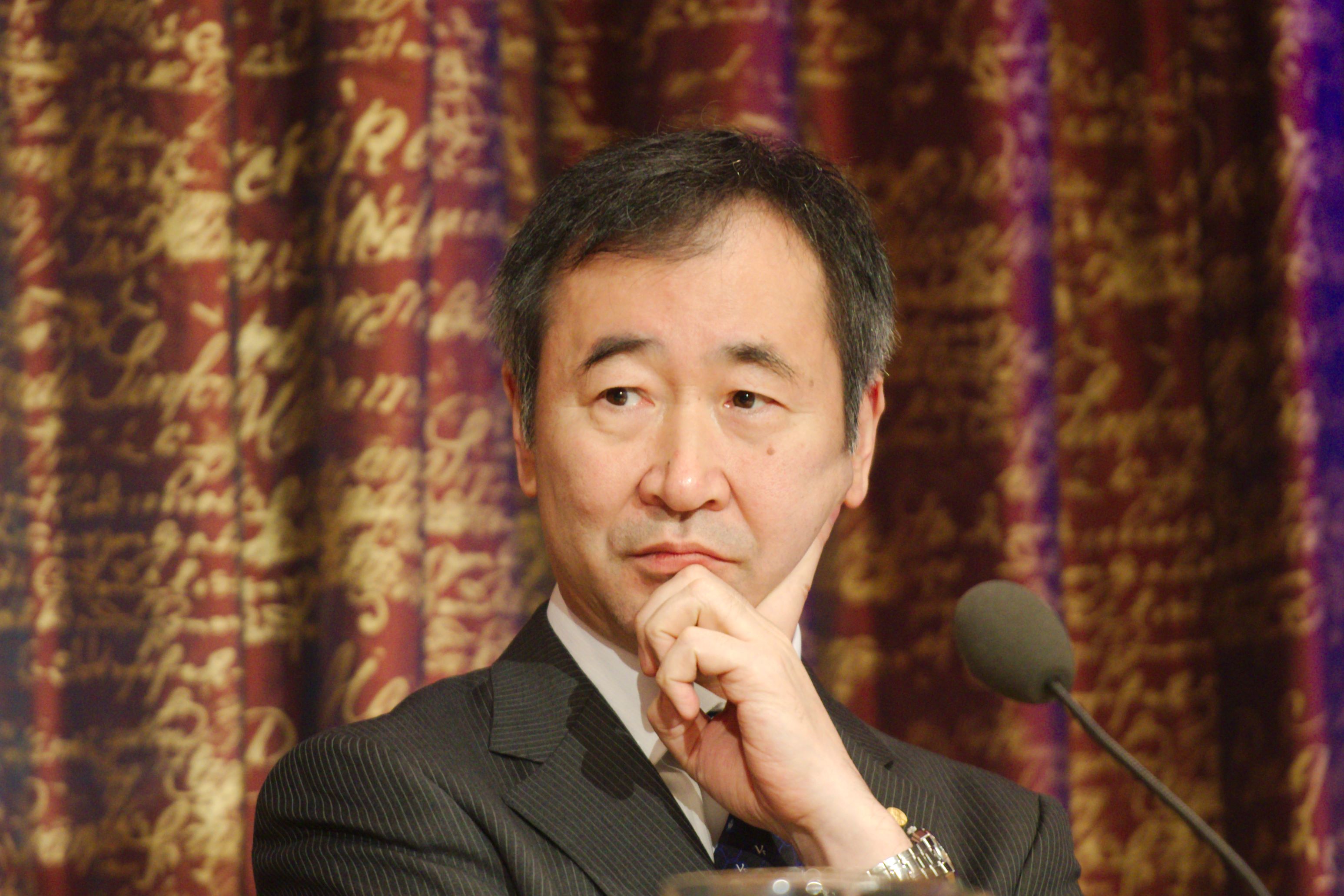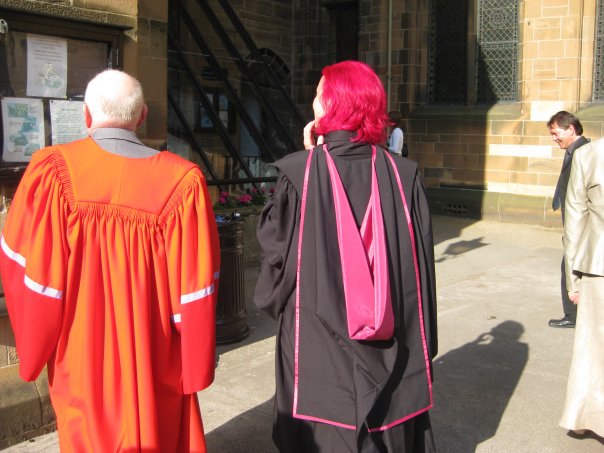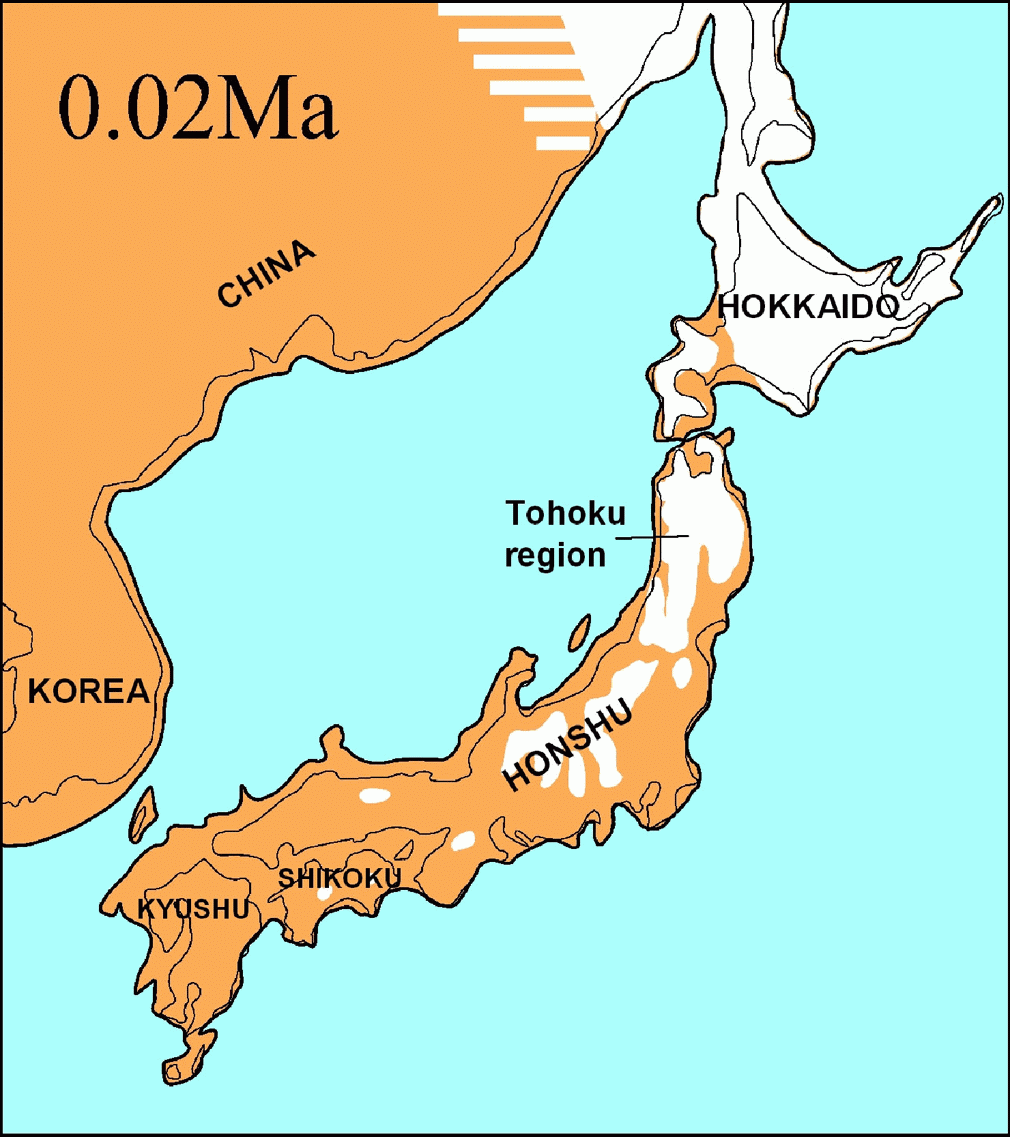|
Takaaki Kajita
is a Japanese physicist, known for neutrino experiments at the Kamioka Observatory – Kamiokande and its successor, Super-Kamiokande. In 2015, he was awarded the Nobel Prize in Physics jointly with Canadian physicist Arthur B. McDonald. On 1 October 2020, he became the president of the Science Council of Japan. Early life and education Kajita was born in 1959 in Higashimatsuyama, Saitama, Japan. He liked studying thought rather than memorizing, especially with interest in physics, biology, World history (field), world history, History of Japan, Japanese history, and earth science in high school. He studied physics at Saitama University and graduated in 1981. He received his doctorate in 1986 at the University of Tokyo. At the University of Tokyo, he joined Masatoshi Koshiba's research group because neutrinos "seemed like they might be interesting." Career and research Since 1988, Kajita has been at the Institute for Cosmic Radiation Research, University of Tokyo, where he be ... [...More Info...] [...Related Items...] OR: [Wikipedia] [Google] [Baidu] |
Higashimatsuyama
is a Cities of Japan, city located in Saitama Prefecture, Japan. , the city had an estimated population of 90,456 in 41,124 households and a population density of 1400 persons per km2. The total area of the city is . Geography Higashimatsuyama is located in the geographic center of Saitama Prefecture. Surrounding municipalities Saitama Prefecture * Hatoyama, Saitama, Hatoyama * Kawajima, Saitama, Kawajima * Kumagaya, Saitama, Kumagaya * Namegawa, Saitama, Namegawa * Ranzan, Saitama, Ranzan * Sakado, Saitama, Sakado * Yoshimi, Saitama, Yoshimi Climate Higashimatsuyama has a Humid subtropical climate (Köppen ''Cfa'') characterized by warm summers and cool winters with light to no snowfall. The average annual temperature in Higashimatsuyama is 14.5 °C. The average annual rainfall is 1351 mm with September as the wettest month. The temperatures are highest on average in August, at around 26.6 °C, and lowest in January, at around 3.6 °C. Demographics Per Jap ... [...More Info...] [...Related Items...] OR: [Wikipedia] [Google] [Baidu] |
Kamiokande
The is a neutrino and gravitational waves laboratory located underground in the Mozumi mine of the Kamioka Mining and Smelting Co. near the Kamioka section of the city of Hida in Gifu Prefecture, Japan. A set of groundbreaking neutrino experiments have taken place at the observatory over the past two decades. All of the experiments have been very large and have contributed substantially to the advancement of particle physics, in particular to the study of neutrino astronomy and neutrino oscillation. The mine The Mozumi mine is one of two adjacent mines owned by the Kamioka Mining and Smelting Co. (a subsidiary of the Mitsui Mining and Smelting Co. Mitsui Kinzoku''). The mine is famous as the site of one of the greatest mass-poisonings in Japanese history. From 1910 to 1945, the mine operators released cadmium from the processing plant into the local water. This cadmium caused what the locals called itai-itai disease. The disease caused weakening of the bones and extreme pain ... [...More Info...] [...Related Items...] OR: [Wikipedia] [Google] [Baidu] |
CBC News
CBC News is the division of the Canadian Broadcasting Corporation responsible for the news gathering and production of news programs on the corporation's English-language operations, namely CBC Television, CBC Radio, CBC News Network, and CBC.ca. Founded in 1941 by the public broadcaster, CBC News is the largest news broadcaster in Canada and has local, regional, and national broadcasts and stations. It frequently collaborates with its organizationally separate French-language counterpart, Radio-Canada Info. History The first CBC newscast was a bilingual radio report on November 2, 1936. The CBC News Service was inaugurated during World War II on January 1, 1941, when Dan McArthur, chief news editor, had Wells Ritchie prepare for the announcer Charles Jennings a national report at 8:00 pm. Previously, CBC relied on The Canadian Press to provide it with wire copy for its news bulletins. Readers who followed Jennings were Lorne Greene, Frank Herbert and Earl Cameron. '' ... [...More Info...] [...Related Items...] OR: [Wikipedia] [Google] [Baidu] |
Japan Times
''The Japan Times'' is Japan's largest and oldest English-language daily newspaper. It is published by , a subsidiary of News2u Holdings, Inc. It is headquartered in the in Kioicho, Chiyoda, Tokyo. History ''The Japan Times'' was launched by on 22 March 1897, with the goal of giving Japanese people an opportunity to read and discuss news and current events in English language, English to help Japan participate in the international community. In 1906, Zumoto was asked by Japanese Resident-General of Korea Itō Hirobumi to lead the English-language newspaper ''The Seoul Press''. Zumoto closely tied the operations of the two newspapers, with subscriptions of ''The Seoul Press'' being sold in Japan by ''The Japan Times'', and vice versa for Korea. Both papers wrote critically of Korean culture and civilization, and advocated for Korea under Japanese rule, Japan's colonial control over the peninsula in order to civilize the Koreans. The newspaper was independent of government ... [...More Info...] [...Related Items...] OR: [Wikipedia] [Google] [Baidu] |
Doctorate
A doctorate (from Latin ''doctor'', meaning "teacher") or doctoral degree is a postgraduate academic degree awarded by universities and some other educational institutions, derived from the ancient formalism '' licentia docendi'' ("licence to teach"). In most countries, a research degree qualifies the holder to teach at university level in the degree's field or work in a specific profession. There are a number of doctoral degrees; the most common is the Doctor of Philosophy (PhD), awarded in many different fields, ranging from the humanities to scientific disciplines. Many universities also award honorary doctorates to individuals deemed worthy of special recognition, either for scholarly work or other contributions to the university or society. History Middle Ages The term ''doctor'' derives from Latin, meaning "teacher" or "instructor". The doctorate (Latin: ''doctoratus'') appeared in medieval Europe as a license to teach Latin (''licentia docendi'') at a university. Its ... [...More Info...] [...Related Items...] OR: [Wikipedia] [Google] [Baidu] |
Earth Science
Earth science or geoscience includes all fields of natural science related to the planet Earth. This is a branch of science dealing with the physical, chemical, and biological complex constitutions and synergistic linkages of Earth's four spheres: the biosphere, hydrosphere/ cryosphere, atmosphere, and geosphere (or lithosphere). Earth science can be considered to be a branch of planetary science but with a much older history. Geology Geology is broadly the study of Earth's structure, substance, and processes. Geology is largely the study of the lithosphere, or Earth's surface, including the crust and rocks. It includes the physical characteristics and processes that occur in the lithosphere as well as how they are affected by geothermal energy. It incorporates aspects of chemistry, physics, and biology as elements of geology interact. Historical geology is the application of geology to interpret Earth history and how it has changed over time. Geochemistry studies the che ... [...More Info...] [...Related Items...] OR: [Wikipedia] [Google] [Baidu] |
History Of Japan
The first human inhabitants of the Japanese archipelago have been traced to the Japanese Paleolithic, Paleolithic, around 38–39,000 years ago. The Jōmon period, named after its cord-marked pottery, was followed by the Yayoi period in the first millennium BC when new inventions were introduced from Asia. During this period, the first known written reference to Japan was recorded in the Chinese ''Book of Han'' in the first century AD. Around the 3rd century BC, the Yayoi people from the continent immigrated to the Japanese archipelago and introduced iron technology and agricultural civilization. Because they had an agricultural civilization, the population of the Yayoi began to grow rapidly and ultimately overwhelmed the Jōmon period, Jōmon people, natives of the Japanese archipelago who were hunter-gatherers. Between the fourth and ninth centuries, Japan's many kingdoms and tribes gradually came to be unified under a centralized government, nominally controlled by the Empe ... [...More Info...] [...Related Items...] OR: [Wikipedia] [Google] [Baidu] |
World History (field)
World history or global history as a field of historical study examines history from a global perspective. It emerged centuries ago; some leading practitioners are Voltaire (1694–1778), Hegel (1770–1831), Karl Marx (1818–1883), Oswald Spengler (1880–1936), and Arnold J. Toynbee (1889–1975). The field became much more active (in terms of university teaching, textbooks, scholarly journals, and academic associations) in the late 20th century. It is not to be confused with comparative history, which, like world history, deals with the history of multiple cultures and nations, but does not do so on a global scale. World historians use a thematic approach, with two major focal points: integration (how processes of world history have drawn people of the world together) and difference (how patterns of world history reveal the diversity of the human experience). Periodisation World history in the Western tradition is commonly divided into three parts, viz. ancient, medi ... [...More Info...] [...Related Items...] OR: [Wikipedia] [Google] [Baidu] |
Biology
Biology is the scientific study of life and living organisms. It is a broad natural science that encompasses a wide range of fields and unifying principles that explain the structure, function, growth, History of life, origin, evolution, and distribution of life. Central to biology are five fundamental themes: the cell (biology), cell as the basic unit of life, genes and heredity as the basis of inheritance, evolution as the driver of biological diversity, energy transformation for sustaining life processes, and the maintenance of internal stability (homeostasis). Biology examines life across multiple biological organisation, levels of organization, from molecules and cells to organisms, populations, and ecosystems. Subdisciplines include molecular biology, physiology, ecology, evolutionary biology, developmental biology, and systematics, among others. Each of these fields applies a range of methods to investigate biological phenomena, including scientific method, observation, ... [...More Info...] [...Related Items...] OR: [Wikipedia] [Google] [Baidu] |
Physics
Physics is the scientific study of matter, its Elementary particle, fundamental constituents, its motion and behavior through space and time, and the related entities of energy and force. "Physical science is that department of knowledge which relates to the order of nature, or, in other words, to the regular succession of events." It is one of the most fundamental scientific disciplines. "Physics is one of the most fundamental of the sciences. Scientists of all disciplines use the ideas of physics, including chemists who study the structure of molecules, paleontologists who try to reconstruct how dinosaurs walked, and climatologists who study how human activities affect the atmosphere and oceans. Physics is also the foundation of all engineering and technology. No engineer could design a flat-screen TV, an interplanetary spacecraft, or even a better mousetrap without first understanding the basic laws of physics. (...) You will come to see physics as a towering achievement of ... [...More Info...] [...Related Items...] OR: [Wikipedia] [Google] [Baidu] |
Nobel Foundation
The Nobel Foundation () is a private institution founded on 29 June 1900 to manage the finances and administration of the Nobel Prizes. The foundation is based on the last will of Alfred Nobel, the inventor of dynamite. It also holds Nobel Symposia on important breakthroughs in science and topics of cultural or social significance. History Alfred Nobel (; born 21 October 1833, in Stockholm, Sweden) was a chemist, engineer, innovator, armaments manufacturer and the inventor of dynamite. He owned Bofors, a major armaments manufacturer, which he had redirected from its original business as an iron and steel mill. Nobel held 355 different patents, dynamite being the most famous. Nobel amassed a sizeable personal fortune during his lifetime, thanks mostly to this invention. In 1896 Nobel died of a stroke in his villa in Sanremo, San Remo, Italy where he had lived his final years.AFP"Alfred Nobel's last will and testament", ''The Local''(5 October 2009): accessed 14 January 2009. ... [...More Info...] [...Related Items...] OR: [Wikipedia] [Google] [Baidu] |
Higashimatsuyama, Saitama
is a city located in Saitama Prefecture, Japan. , the city had an estimated population of 90,456 in 41,124 households and a population density of 1400 persons per km2. The total area of the city is . Geography Higashimatsuyama is located in the geographic center of Saitama Prefecture. Surrounding municipalities Saitama Prefecture * Hatoyama * Kawajima * Kumagaya * Namegawa * Ranzan * Sakado * Yoshimi Climate Higashimatsuyama has a Humid subtropical climate (Köppen ''Cfa'') characterized by warm summers and cool winters with light to no snowfall. The average annual temperature in Higashimatsuyama is 14.5 °C. The average annual rainfall is 1351 mm with September as the wettest month. The temperatures are highest on average in August, at around 26.6 °C, and lowest in January, at around 3.6 °C. Demographics Per Japanese census data, the population of Higashimatsuyama has recently plateaued after a long period of growth. History Higashimatsuyama de ... [...More Info...] [...Related Items...] OR: [Wikipedia] [Google] [Baidu] |








